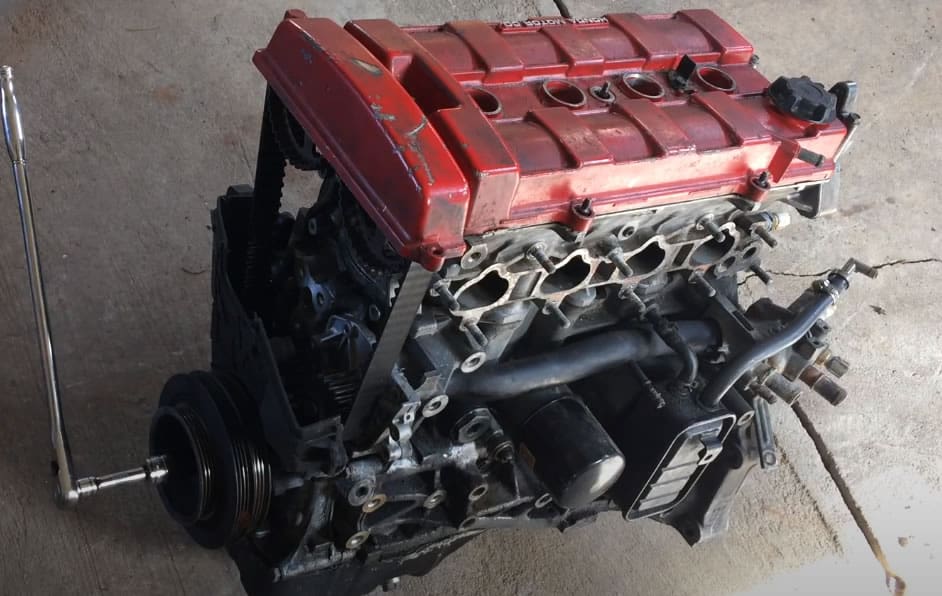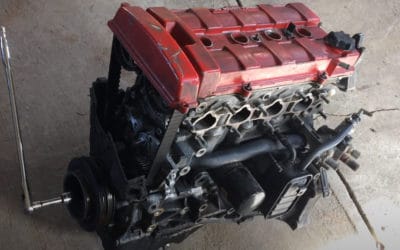Perhaps the most pressing topic that requires a comprehensive analysis is how to choose an engine and what issues need to be considered during the purchase process. In this article, we will tell you what every buyer needs to know before he is going to buy an engine on the used market.
Important note
Buying a used engine is a serious undertaking. To minimize all risks, you need to contact only large trustworthy companies. Only they provide complete and reliable information about which vehicle the engine was removed from, what mileage it had, what errors in operation are. In some cases, the buyer can even get a detailed video with the engine running until it is removed from the car.
1. Has The Engine Been Washed?
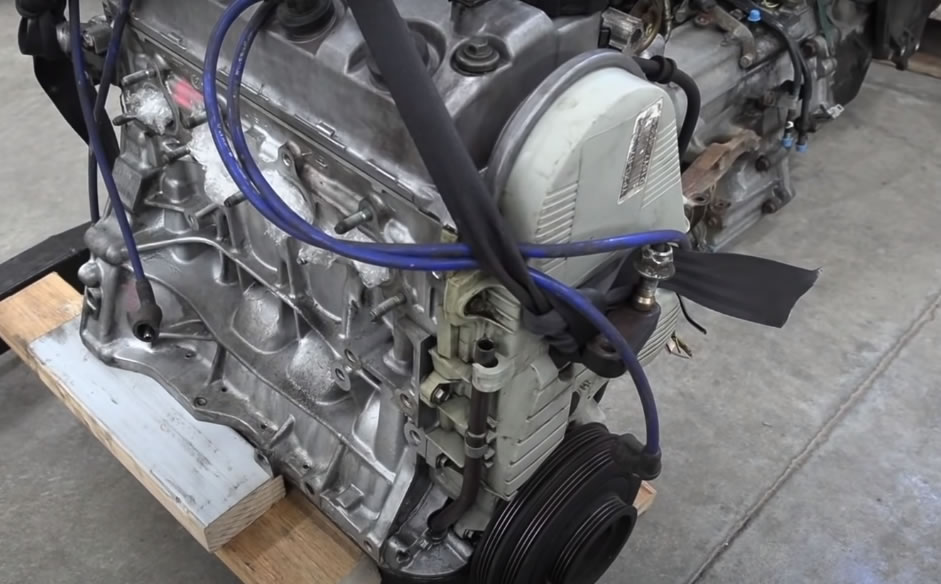
Check immediately if the engine is washed. If so, this may be a signal that the seller is hiding various kinds of oil leaks from under the oil seals, gaskets and seals. The very fact of a detected leak is not something critical: you just need to check if there are any leaks from under the cylinder head. The rest of the “weak points” are easily repaired during the installation of the engine on the car.
Advice: If the engine is washed, it becomes more difficult to assess its condition. The buyer runs the risk of detecting leaks in several places at the first start, which will result in additional expenses for repairs. If the seller says that the bends has not been washed, but is in “tidy condition”, then pay attention to the grooves, for example, the front cover. In the places where the bends meet, debris often accumulates, which a negligent seller is simply not able to wash – on used engines such a plaque will be visible immediately. This will indicate one thing: the seller wants to hide the true condition of the used engine.
2. Check if any bolts have been unscrewed on the engine.
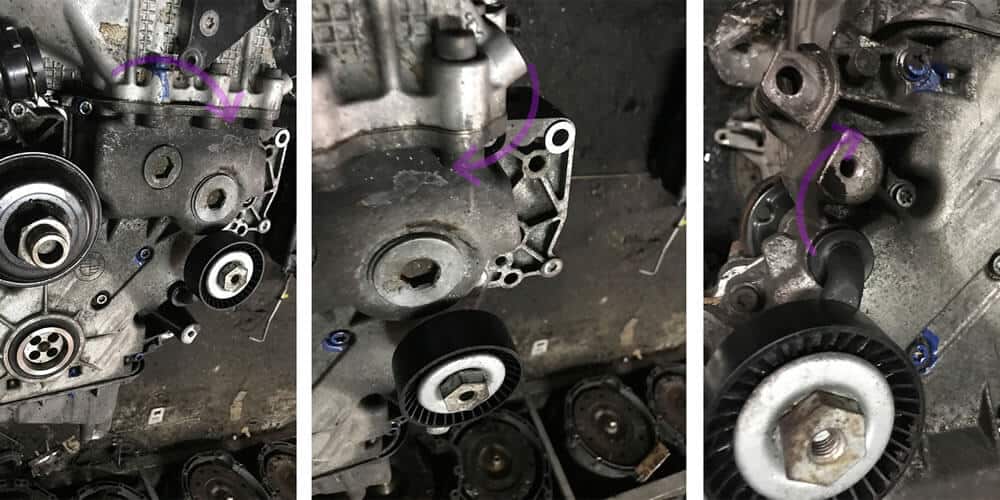
According to their condition, it is immediately possible to determine whether the engine was in a state of overhaul or whether it stood in the car for the entire service life without dismantling. When the bolt is unscrewed, traces from the keys remain on the edges of its head.
However, you should not refuse the purchase if you nevertheless found that any manipulations were carried out with the engine bolts – for example, removing the cylinder head valve cover may indicate maintenance performed, over-sealing of gaskets or oil seals.
3. Inspect the Cylinder Head Valve Cover Bolts.
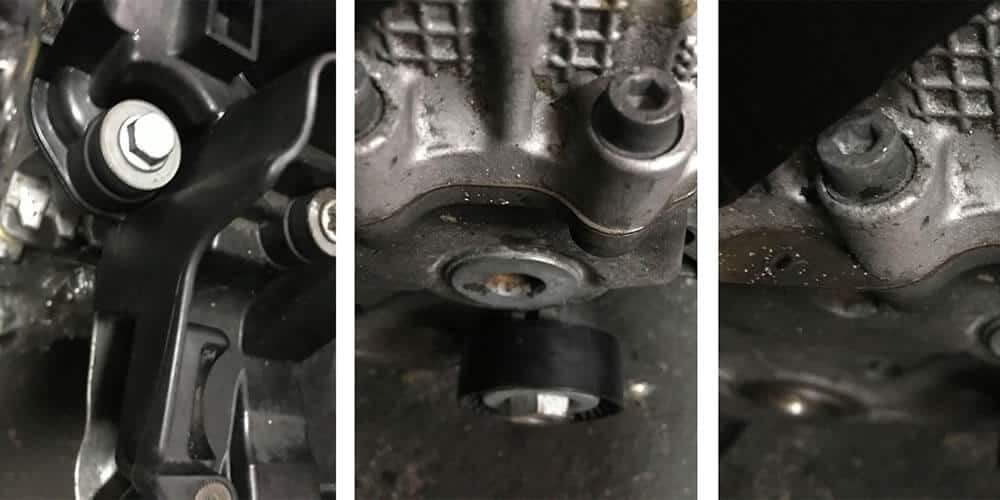
Then we pay attention to the fasteners of the front cover, and then we assess the condition of the pallet bolts. A good sign will be the presence of factory sealant on them.
Advice: You need to look at the whole situation as a whole. If key marks are found on most of the bolts, this means that the engine has been overhauled. It is better to refuse such a purchase.
3. Check The Engine oil condition
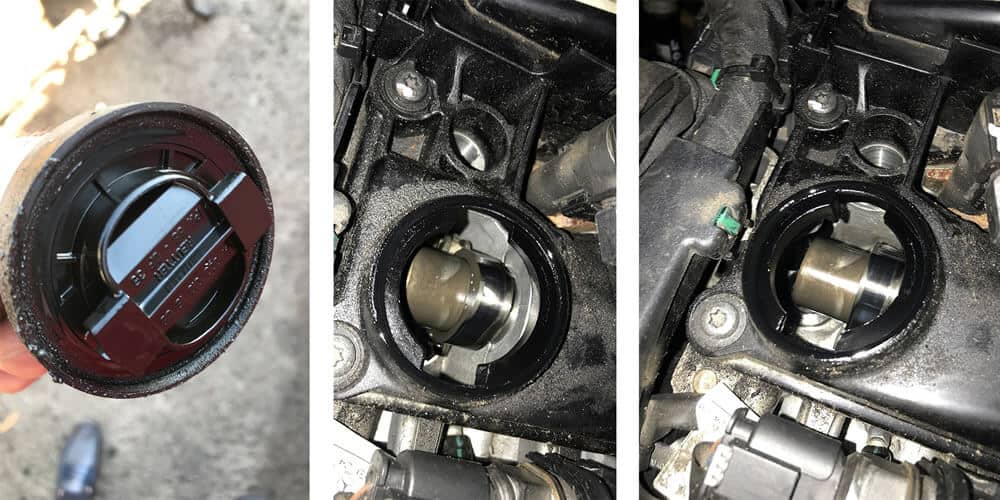
We unscrew the oil filler cap and inspect it carefully. The inside must be free of carbon deposits, oil clots or dark metallic deposits. In addition, it is necessary to look into the throat itself in order, if possible, to check the absence of the same carbon deposits on the internal parts of the engine. The shine and cleanliness of the insides is a good sign for the buyer: this means that the owner has operated the engine with only good engine oil.
By the way, oil is one of the main indicators of the condition of the engine.
4. Inspect the Pulleys and Gears
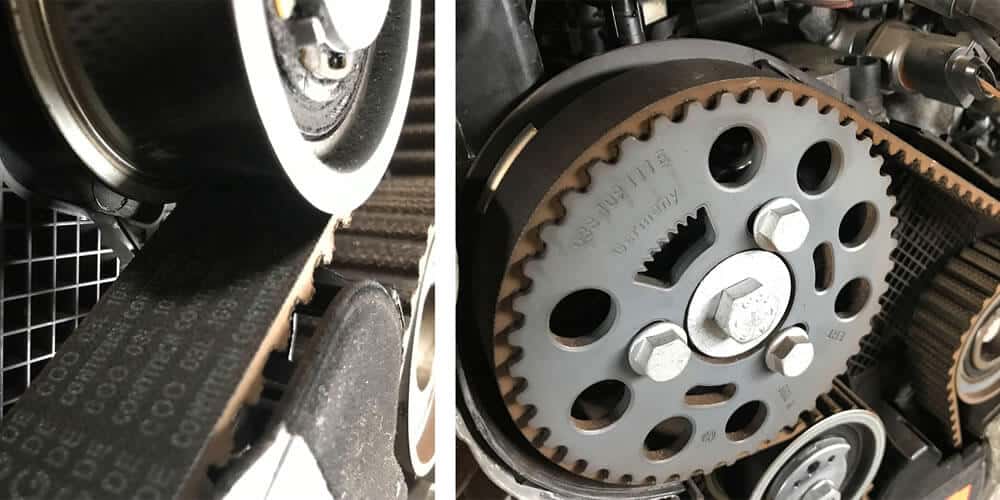
Before buying a used engine, the buyer, of course, receives information about the total mileage of the car. This information can be verified by careful analysis of the pulleys (if the engine is equipped with a timing belt) or gears (if equipped with a chain drive).
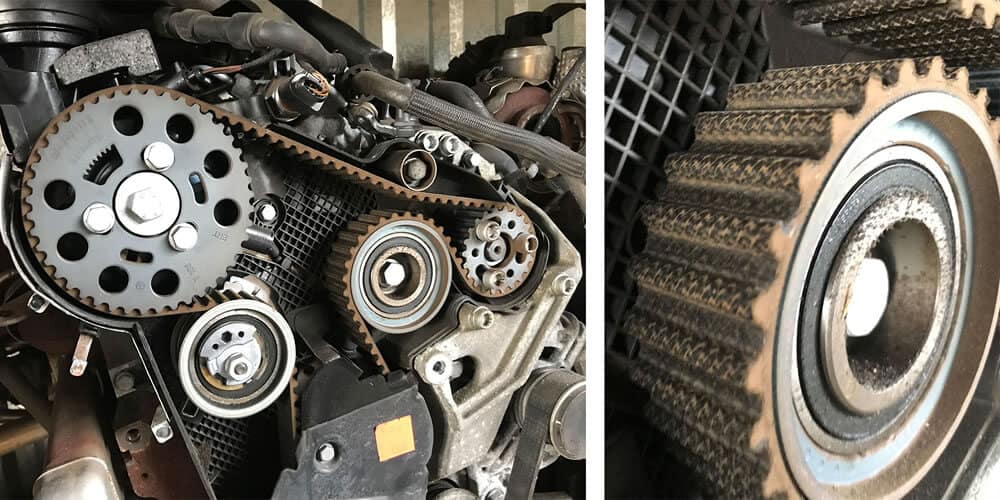
As a rule, both the chain and the belt are durable parts. The average mileage is about 60 thousand miles for the timing belt and more than 150 thousand miles for the chain. This allows us to assess the wear of related parts during the inspection of a used engine.
Serious mileage will inevitably lead to the formation of so-called pulleys on all pulleys. “Steps” – a phenomenon in which the belt “slips” the metal during operation in the center of the pulley, leaving a distinct trace at the edges that resembles a step.
If the belt itself looks good, and the pulleys show a long service life, you should check with the seller why the belt changed and what led to this. For information on what questions to ask the seller, read article: ” Six Questions to the Seller of Auto Parts .”
5. Inspect The Chain Drive
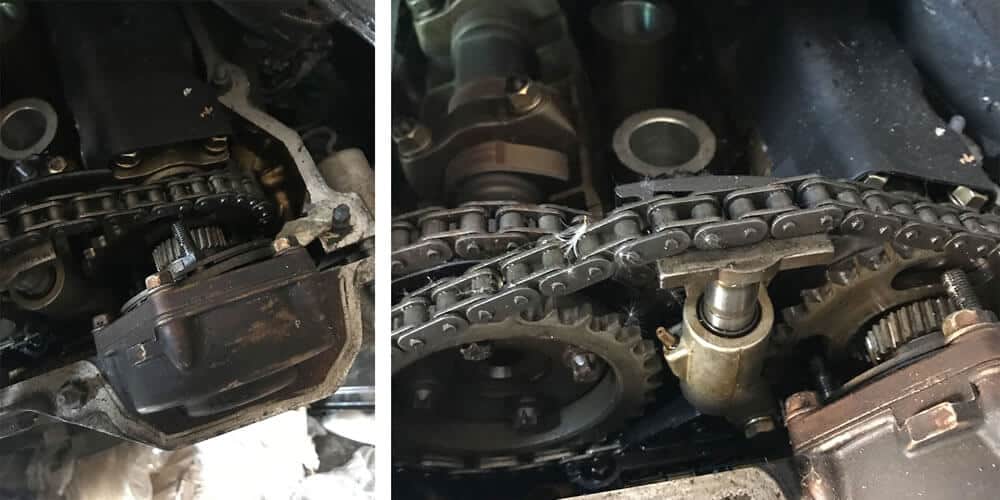
The chain drive is practically “eternal” thing when we talk about the correct operation of the engine. As a rule, a timing drive of this type serves a good owner for almost the entire life of the car.
However, we note that even the reliability of such a part can be called into question if the engine has been operated at high speeds all the time. When examining, you should pay attention to the condition of the gears – there should be no chips or scuffs on their teeth, and the chain itself should not “sag” between the gears.
6. Inspect The Spark Plugs
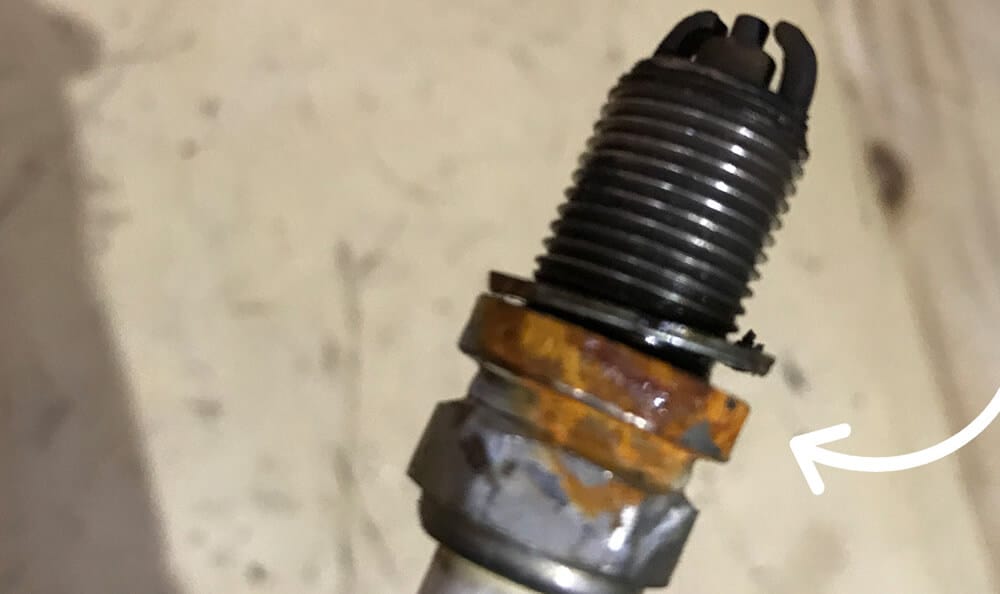
The information in this paragraph will only be useful when buying a gasoline engine, because on engines using diesel fuel, diagnostics of heating plugs is reduced only to a visual inspection for the presence of carbon deposits.
Checking the spark plugs is an important step in the entire engine inspection. Unscrewing is performed using a special candle wrench after disconnecting the electrical cables from the contact head. After unscrewing the candle, inspect its insulator. The presence of a yellow-brown plaque may indicate poor quality fuel, on which the engine was operated.
Advice: Only a brown coating speaks of poor-quality fuel. The yellow “carbon deposit” is often simply associated with the long service life of the candle and darkening as a result of constant exposure to chemically active substances. In any case, a plaque on the candle is an indication of the need to replace it.
Small carbon deposits on the side electrode and the thread of the plug are allowed – this will only indicate the need to replace the plugs after installing the engine in the car. But a strong carbon deposit should alert the buyer – this may indicate a malfunction of the entire injection system. In addition, the spark plugs can simply “fill” with fuel, as a result of which there is no need to talk about ideal compression in the future.
7. Check the exhaust manifold
If the engine is equipped with an exhaust manifold, it is best to ask the seller to remove this part to ensure that the engine exhaust ports are clean. They must of course be dry. In addition, the presence of oil stains in the windows will indicate an increased oil consumption by the engine itself. Light dry soot allowed.
Advice: If the seller refuses to remove the exhaust manifold, and also forbids you to do it yourself when inspecting the engine, then there is a high probability that he is thus trying to hide some flaws. The list of malfunctions that the owner may encounter is very wide – from the usual excessive consumption of oil to the failure of one or more valves. It is better to refuse such a purchase.
8. Check The Crankshaft
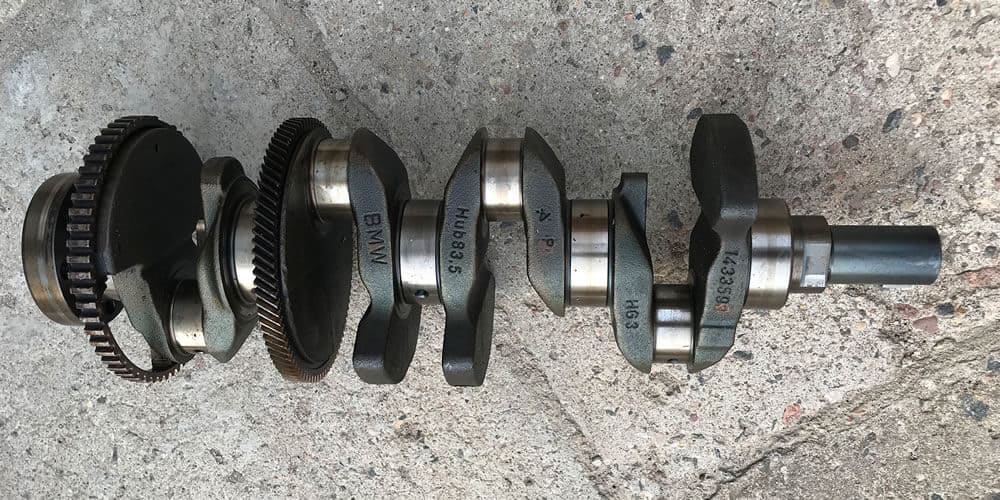
In “field” conditions, checking the crankshaft involves turning it several times with a knob or a special L-shaped key. In a serviceable engine, the crankshaft turns easily, but the pistons recoil (often referred to as “hand compression”) is felt. You need to turn two or three full turns.
If the shaft turns easily, and you feel a kind of “jumps” of the pistons, then everything is in order with the part itself.
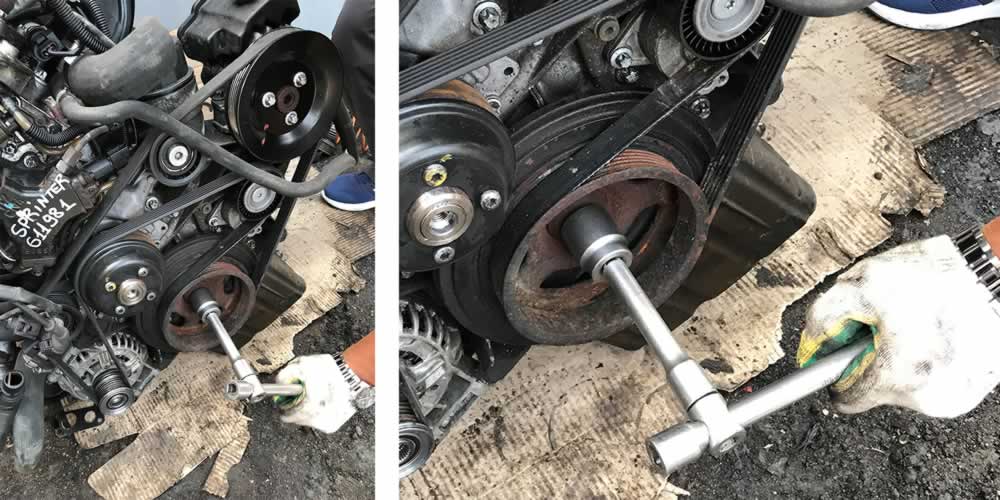
9. Use An Endoscope
We recommend using an endoscope to make sure the motor is working properly. This device is a flexible probe with a camera and a flashlight at the end. It is very simple to use it – you need to unscrew the candles (or nozzles, if we are talking about a diesel engine), and then insert the end of the endoscope into the hole formed. With the help of the camera, it will be possible to see the presence or absence of “scuffs” in the cylinders, as well as to look at their general condition. By the way, inside there should be no traces of piston movement or oil deposits.
The procedure for checking a used engine is greatly simplified if the buyer can check the engine at a workshop before purchasing. As a rule, in the conditions of a car workshop, two more procedures are carried out – the air leakage in the cylinders is checked and the compression is measured.
10. Check For Cylinder Leaks
To carry out this procedure, you must completely unscrew the spark plugs from the cylinder head, and then use a cylinder leak tester. This device looks like two paired pressure gauges that are connected to an industrial-type compressor. The tester’s nozzle is connected to a rubber tube with a tip that is screwed into place of the plug (starting from the first cylinder). At the same time, by scrolling the crankshaft, the piston of the cylinder being checked is set to top dead center (TDC).
For reference. Top dead center (TDC) is the position of the piston in the cylinder in which the piston crown is at the maximum distance from the crankshaft.
Next, the compressor starts pumping air into the cylinder, as a rule, until a pressure of 0.6 MPa (6.1 atm) is reached, which is monitored on the first pressure gauge. The second pressure gauge is equipped with a percentage scale, which shows the pressure loss. On new or relatively new engines, losses should not exceed 5% per cylinder. On used engines, the loss can vary by up to 10%.
11. Do A Compression Check
The very term “compression” in relation to the engine means the maximum retained pressure that is created by the piston in the cylinder. This procedure is not mandatory when checking a used engine, however, its implementation and recording of the results in the future will help in diagnosing the engine during operation.
To measure the compression, you need a pressure gauge attached to a branch pipe with a tip screwed in instead of a candle (starting from the first cylinder). Then, using a pneumatic or electric drill, the crankshaft is spun so that the movement of the piston in the cylinder creates atmospheric pressure, which will be measured by a manometer. As a rule, three to four full revolutions of the crankshaft are enough to create the necessary pressure in the cylinder. Compression values for each engine are individual, therefore, before buying and testing a used engine, you should familiarize yourself with the technical documentation provided by the manufacturer.
It is important that the compression values on each of the cylinders coincide with each other (or are within the statistical error). This will mean that everything is in order with the cylinder-piston group of the engine.
Advice: Both checks described above mean that there should be no places in the engine through which air will be sucked in (except for the standard air intake). Therefore, before carrying out the described procedures, you must make sure that, for example, the oil filler cap is closed, so that the throttle (if any) is in the closed position, etc.
